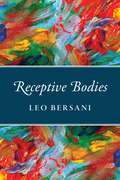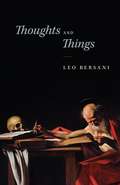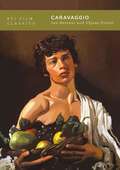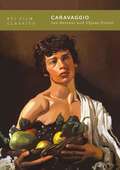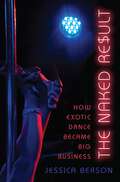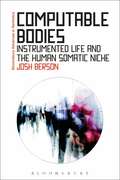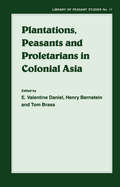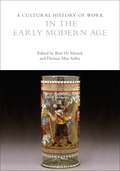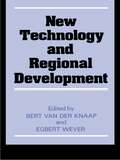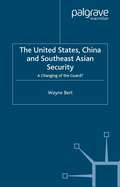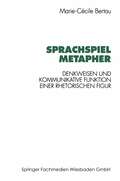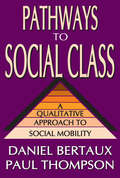- Table View
- List View
Receptive Bodies
by Leo BersaniLeo Bersani, known for his provocative interrogations of psychoanalysis, sexuality, and the human body, centers his latest book on a surprisingly simple image: a newborn baby simultaneously crying out and drawing its first breath. These twin ideas—absorption and expulsion, the intake of physical and emotional nourishment and the exhalation of breath—form the backbone of Receptive Bodies, a thoughtful new essay collection. These titular bodies range from fetuses in utero to fully eroticized adults, all the way to celestial giants floating in space. Bersani illustrates his exploration of the body’s capacities to receive and resist what is ostensibly alien using a typically eclectic set of sources, from literary icons like Marquis de Sade to cinematic provocateurs such as Bruno Dumont and Lars von Trier. This sharp and wide-ranging book will excite scholars of Freud, Foucault, and film studies, or anyone who has ever stopped to ponder the give and take of human corporeality.
Receptive Bodies
by Leo BersaniLeo Bersani, known for his provocative interrogations of psychoanalysis, sexuality, and the human body, centers his latest book on a surprisingly simple image: a newborn baby simultaneously crying out and drawing its first breath. These twin ideas—absorption and expulsion, the intake of physical and emotional nourishment and the exhalation of breath—form the backbone of Receptive Bodies, a thoughtful new essay collection. These titular bodies range from fetuses in utero to fully eroticized adults, all the way to celestial giants floating in space. Bersani illustrates his exploration of the body’s capacities to receive and resist what is ostensibly alien using a typically eclectic set of sources, from literary icons like Marquis de Sade to cinematic provocateurs such as Bruno Dumont and Lars von Trier. This sharp and wide-ranging book will excite scholars of Freud, Foucault, and film studies, or anyone who has ever stopped to ponder the give and take of human corporeality.
Receptive Bodies
by Leo BersaniLeo Bersani, known for his provocative interrogations of psychoanalysis, sexuality, and the human body, centers his latest book on a surprisingly simple image: a newborn baby simultaneously crying out and drawing its first breath. These twin ideas—absorption and expulsion, the intake of physical and emotional nourishment and the exhalation of breath—form the backbone of Receptive Bodies, a thoughtful new essay collection. These titular bodies range from fetuses in utero to fully eroticized adults, all the way to celestial giants floating in space. Bersani illustrates his exploration of the body’s capacities to receive and resist what is ostensibly alien using a typically eclectic set of sources, from literary icons like Marquis de Sade to cinematic provocateurs such as Bruno Dumont and Lars von Trier. This sharp and wide-ranging book will excite scholars of Freud, Foucault, and film studies, or anyone who has ever stopped to ponder the give and take of human corporeality.
Receptive Bodies
by Leo BersaniLeo Bersani, known for his provocative interrogations of psychoanalysis, sexuality, and the human body, centers his latest book on a surprisingly simple image: a newborn baby simultaneously crying out and drawing its first breath. These twin ideas—absorption and expulsion, the intake of physical and emotional nourishment and the exhalation of breath—form the backbone of Receptive Bodies, a thoughtful new essay collection. These titular bodies range from fetuses in utero to fully eroticized adults, all the way to celestial giants floating in space. Bersani illustrates his exploration of the body’s capacities to receive and resist what is ostensibly alien using a typically eclectic set of sources, from literary icons like Marquis de Sade to cinematic provocateurs such as Bruno Dumont and Lars von Trier. This sharp and wide-ranging book will excite scholars of Freud, Foucault, and film studies, or anyone who has ever stopped to ponder the give and take of human corporeality.
Receptive Bodies
by Leo BersaniLeo Bersani, known for his provocative interrogations of psychoanalysis, sexuality, and the human body, centers his latest book on a surprisingly simple image: a newborn baby simultaneously crying out and drawing its first breath. These twin ideas—absorption and expulsion, the intake of physical and emotional nourishment and the exhalation of breath—form the backbone of Receptive Bodies, a thoughtful new essay collection. These titular bodies range from fetuses in utero to fully eroticized adults, all the way to celestial giants floating in space. Bersani illustrates his exploration of the body’s capacities to receive and resist what is ostensibly alien using a typically eclectic set of sources, from literary icons like Marquis de Sade to cinematic provocateurs such as Bruno Dumont and Lars von Trier. This sharp and wide-ranging book will excite scholars of Freud, Foucault, and film studies, or anyone who has ever stopped to ponder the give and take of human corporeality.
Receptive Bodies
by Leo BersaniLeo Bersani, known for his provocative interrogations of psychoanalysis, sexuality, and the human body, centers his latest book on a surprisingly simple image: a newborn baby simultaneously crying out and drawing its first breath. These twin ideas—absorption and expulsion, the intake of physical and emotional nourishment and the exhalation of breath—form the backbone of Receptive Bodies, a thoughtful new essay collection. These titular bodies range from fetuses in utero to fully eroticized adults, all the way to celestial giants floating in space. Bersani illustrates his exploration of the body’s capacities to receive and resist what is ostensibly alien using a typically eclectic set of sources, from literary icons like Marquis de Sade to cinematic provocateurs such as Bruno Dumont and Lars von Trier. This sharp and wide-ranging book will excite scholars of Freud, Foucault, and film studies, or anyone who has ever stopped to ponder the give and take of human corporeality.
Thoughts and Things
by Leo BersaniLeo Bersani’s career spans more than fifty years and extends across a wide spectrum of fields—including French studies, modernism, realist fiction, psychoanalytic criticism, film studies, and queer theory. Throughout this new collection of essays that ranges, interestingly and brilliantly, from movies by Claire Denis and Jean-Luc Godard to fiction by Proust and Pierre Bergounioux, Bersani considers various kinds of connectedness. Thoughts and Things posits what would appear to be an irreducible gap between our thoughts (the human subject) and things (the world). Bersani departs from his psychoanalytic convictions to speculate on the oneness of being—of our intrinsic connectedness to the other that is at once external and internal to us. He addresses the problem of formulating ways to consider the undivided mind, drawing on various sources, from Descartes to cosmology, Freud, and Genet and succeeds brilliantly in diagramming new forms as well as radical failures of connectedness. Ambitious, original, and eloquent, Thoughts and Things will be of interest to scholars in philosophy, film, literature, and beyond.
Thoughts and Things
by Leo BersaniLeo Bersani’s career spans more than fifty years and extends across a wide spectrum of fields—including French studies, modernism, realist fiction, psychoanalytic criticism, film studies, and queer theory. Throughout this new collection of essays that ranges, interestingly and brilliantly, from movies by Claire Denis and Jean-Luc Godard to fiction by Proust and Pierre Bergounioux, Bersani considers various kinds of connectedness. Thoughts and Things posits what would appear to be an irreducible gap between our thoughts (the human subject) and things (the world). Bersani departs from his psychoanalytic convictions to speculate on the oneness of being—of our intrinsic connectedness to the other that is at once external and internal to us. He addresses the problem of formulating ways to consider the undivided mind, drawing on various sources, from Descartes to cosmology, Freud, and Genet and succeeds brilliantly in diagramming new forms as well as radical failures of connectedness. Ambitious, original, and eloquent, Thoughts and Things will be of interest to scholars in philosophy, film, literature, and beyond.
Thoughts and Things
by Leo BersaniLeo Bersani’s career spans more than fifty years and extends across a wide spectrum of fields—including French studies, modernism, realist fiction, psychoanalytic criticism, film studies, and queer theory. Throughout this new collection of essays that ranges, interestingly and brilliantly, from movies by Claire Denis and Jean-Luc Godard to fiction by Proust and Pierre Bergounioux, Bersani considers various kinds of connectedness. Thoughts and Things posits what would appear to be an irreducible gap between our thoughts (the human subject) and things (the world). Bersani departs from his psychoanalytic convictions to speculate on the oneness of being—of our intrinsic connectedness to the other that is at once external and internal to us. He addresses the problem of formulating ways to consider the undivided mind, drawing on various sources, from Descartes to cosmology, Freud, and Genet and succeeds brilliantly in diagramming new forms as well as radical failures of connectedness. Ambitious, original, and eloquent, Thoughts and Things will be of interest to scholars in philosophy, film, literature, and beyond.
Thoughts and Things
by Leo BersaniLeo Bersani’s career spans more than fifty years and extends across a wide spectrum of fields—including French studies, modernism, realist fiction, psychoanalytic criticism, film studies, and queer theory. Throughout this new collection of essays that ranges, interestingly and brilliantly, from movies by Claire Denis and Jean-Luc Godard to fiction by Proust and Pierre Bergounioux, Bersani considers various kinds of connectedness. Thoughts and Things posits what would appear to be an irreducible gap between our thoughts (the human subject) and things (the world). Bersani departs from his psychoanalytic convictions to speculate on the oneness of being—of our intrinsic connectedness to the other that is at once external and internal to us. He addresses the problem of formulating ways to consider the undivided mind, drawing on various sources, from Descartes to cosmology, Freud, and Genet and succeeds brilliantly in diagramming new forms as well as radical failures of connectedness. Ambitious, original, and eloquent, Thoughts and Things will be of interest to scholars in philosophy, film, literature, and beyond.
Thoughts and Things
by Leo BersaniLeo Bersani’s career spans more than fifty years and extends across a wide spectrum of fields—including French studies, modernism, realist fiction, psychoanalytic criticism, film studies, and queer theory. Throughout this new collection of essays that ranges, interestingly and brilliantly, from movies by Claire Denis and Jean-Luc Godard to fiction by Proust and Pierre Bergounioux, Bersani considers various kinds of connectedness. Thoughts and Things posits what would appear to be an irreducible gap between our thoughts (the human subject) and things (the world). Bersani departs from his psychoanalytic convictions to speculate on the oneness of being—of our intrinsic connectedness to the other that is at once external and internal to us. He addresses the problem of formulating ways to consider the undivided mind, drawing on various sources, from Descartes to cosmology, Freud, and Genet and succeeds brilliantly in diagramming new forms as well as radical failures of connectedness. Ambitious, original, and eloquent, Thoughts and Things will be of interest to scholars in philosophy, film, literature, and beyond.
Thoughts and Things
by Leo BersaniLeo Bersani’s career spans more than fifty years and extends across a wide spectrum of fields—including French studies, modernism, realist fiction, psychoanalytic criticism, film studies, and queer theory. Throughout this new collection of essays that ranges, interestingly and brilliantly, from movies by Claire Denis and Jean-Luc Godard to fiction by Proust and Pierre Bergounioux, Bersani considers various kinds of connectedness. Thoughts and Things posits what would appear to be an irreducible gap between our thoughts (the human subject) and things (the world). Bersani departs from his psychoanalytic convictions to speculate on the oneness of being—of our intrinsic connectedness to the other that is at once external and internal to us. He addresses the problem of formulating ways to consider the undivided mind, drawing on various sources, from Descartes to cosmology, Freud, and Genet and succeeds brilliantly in diagramming new forms as well as radical failures of connectedness. Ambitious, original, and eloquent, Thoughts and Things will be of interest to scholars in philosophy, film, literature, and beyond.
Caravaggio (BFI Film Classics)
by Leo Bersani Ulysse DutoitCaravaggio (1986), Derek Jarman's portrait of the Italian Baroque artist, shows the painter at work with models drawn from Rome's homeless and prostitutes, and his relationship with two very different lovers: Ranuccio, played by Sean Bean, and Lena, played by Tilda Swinton. It is probably the closest Derek Jarman came to a mainstream film. And yet the film is a uniquely complex and lucid treatment of Jarman's major concerns: violence, history, homosexuality, and the relation between film and painting. In particular, according to Leo Bersani and Ulysse Dutoit, Caravaggio is unlike Jarman's other work in avoiding a sentimentalising of gay relationships and in making no neat distinction between the exercise and the suffering of violence.Film-making involves a coercive power which, for Bersani and Dutoit, Jarman may, without admitting it to himself, have found deeply seductive. But in Caravaggio this power is renounced, and the result is Jarman's most profound, unsettling and astonishing reflection on sexuality and identity.
Caravaggio (BFI Film Classics)
by Leo Bersani Ulysse DutoitCaravaggio (1986), Derek Jarman's portrait of the Italian Baroque artist, shows the painter at work with models drawn from Rome's homeless and prostitutes, and his relationship with two very different lovers: Ranuccio, played by Sean Bean, and Lena, played by Tilda Swinton. It is probably the closest Derek Jarman came to a mainstream film. And yet the film is a uniquely complex and lucid treatment of Jarman's major concerns: violence, history, homosexuality, and the relation between film and painting. In particular, according to Leo Bersani and Ulysse Dutoit, Caravaggio is unlike Jarman's other work in avoiding a sentimentalising of gay relationships and in making no neat distinction between the exercise and the suffering of violence.Film-making involves a coercive power which, for Bersani and Dutoit, Jarman may, without admitting it to himself, have found deeply seductive. But in Caravaggio this power is renounced, and the result is Jarman's most profound, unsettling and astonishing reflection on sexuality and identity.
The Naked Result: How Exotic Dance Became Big Business
by Jessica BersonWe have grown accustomed to corporate influence in retail outlets, restaurants, and even higher education-but what happens when corporations take over desire? The Naked Result: How Exotic Dance Became Big Business explores the changing world of striptease, tracing its path from the unruly underground to brightly lit, branded 'gentlemen's clubs.' Drawing on her own experience as an exotic dancer, Jessica Berson examines the ways that striptease embodies conflicting notions of race, class, and female sexuality, and how the exotic dance industry deploys these differences to codify and commodify our erotic imagination. Chain clubs, fitness programs, and music videos are moving exotic dance into the mainstream, stripping its historical potential to embody and express subversive desires-erotic and otherwise-and generate resistant modes of female erotic subjectivity. Through case studies including Boston's Combat Zone in the 1970s-80s, the development of lap dancing in London in the 1990s, and the triumph of corporate striptease in post-Giuliani New York City in the last decade,The Naked Result reveals an industry that increasingly eradicates individuality and agency in order to increase profits. Ultimately, The Naked Result argues that corporatization has cheerfully smothered the diversity of desire and expression for both dancers and customers, repackaging the most mysterious human emotions into easily branded experiences no more personal or powerful than those to be found in any themed restaurant or coffee mega-chain.
The Naked Result: How Exotic Dance Became Big Business
by Jessica BersonWe have grown accustomed to corporate influence in retail outlets, restaurants, and even higher education-but what happens when corporations take over desire? The Naked Result: How Exotic Dance Became Big Business explores the changing world of striptease, tracing its path from the unruly underground to brightly lit, branded 'gentlemen's clubs.' Drawing on her own experience as an exotic dancer, Jessica Berson examines the ways that striptease embodies conflicting notions of race, class, and female sexuality, and how the exotic dance industry deploys these differences to codify and commodify our erotic imagination. Chain clubs, fitness programs, and music videos are moving exotic dance into the mainstream, stripping its historical potential to embody and express subversive desires-erotic and otherwise-and generate resistant modes of female erotic subjectivity. Through case studies including Boston's Combat Zone in the 1970s-80s, the development of lap dancing in London in the 1990s, and the triumph of corporate striptease in post-Giuliani New York City in the last decade,The Naked Result reveals an industry that increasingly eradicates individuality and agency in order to increase profits. Ultimately, The Naked Result argues that corporatization has cheerfully smothered the diversity of desire and expression for both dancers and customers, repackaging the most mysterious human emotions into easily branded experiences no more personal or powerful than those to be found in any themed restaurant or coffee mega-chain.
Computable Bodies: Instrumented Life and the Human Somatic Niche (Bloomsbury Advances in Semiotics)
by Josh BersonWinner of the 2016 PROSE Award in Language and LinguisticsData. Suddenly it is everywhere, and more and more of it is about us. The computing revolution has transformed our understanding of nature. Now it is transforming human behaviour.For some, pervasive computing offers a powerful vehicle of introspection and self-improvement. For others it signals the arrival of a dangerous 'control society' in which surveillance is no longer the prerogative of discrete institutions but a simple fact of life.In Computable Bodies, anthropologist Josh Berson asks how the data revolution is changing what it means to be human. Drawing on fieldwork in the Quantified Self and polyphasic sleeping communities and integrating perspectives from interaction design, the history and philosophy of science, and medical and linguistic anthropology, he probes a world where everyday life is mediated by a proliferating array of sensor montages, where we adjust our social signals to make them legible to algorithms, and where old rubrics for gauging which features of the world are animate no longer hold.Computable Bodies offers a vision of an anthropology for an age in which our capacity to generate data and share it over great distances is reconfiguring the body–world interface in ways scarcely imaginable a generation ago.
Computable Bodies: Instrumented Life and the Human Somatic Niche (Bloomsbury Advances in Semiotics)
by Josh BersonWinner of the 2016 PROSE Award in Language and LinguisticsData. Suddenly it is everywhere, and more and more of it is about us. The computing revolution has transformed our understanding of nature. Now it is transforming human behaviour.For some, pervasive computing offers a powerful vehicle of introspection and self-improvement. For others it signals the arrival of a dangerous 'control society' in which surveillance is no longer the prerogative of discrete institutions but a simple fact of life.In Computable Bodies, anthropologist Josh Berson asks how the data revolution is changing what it means to be human. Drawing on fieldwork in the Quantified Self and polyphasic sleeping communities and integrating perspectives from interaction design, the history and philosophy of science, and medical and linguistic anthropology, he probes a world where everyday life is mediated by a proliferating array of sensor montages, where we adjust our social signals to make them legible to algorithms, and where old rubrics for gauging which features of the world are animate no longer hold.Computable Bodies offers a vision of an anthropology for an age in which our capacity to generate data and share it over great distances is reconfiguring the body–world interface in ways scarcely imaginable a generation ago.
Plantations, Proletarians and Peasants in Colonial Asia
by Henry Berstein Tom Brass E. Valentine DanielThis volume originated in a conference on 'Capitalist Plantations in Colonial Asia', held at the Centre for Asian Studies of the University of Amsterdam and Free University of Amsterdam in September 1990. The contributions to this collection focus on the production of rubber, sugar, tea, and several less strategic plantation crops, in colonial Indochina, Java, Malaya, the Philippines, India, Ceylon, Mauritius and Fiji (although geographically anomalous, both the latter are included because of the centrality to their sugar plantations of indentured labour from India).
A Cultural History of Work in the Early Modern Age (The Cultural Histories Series)
by Bert De Munck and Thomas Max SafleyWinner of the 2020 PROSE Award for Multivolume Reference/Humanities In the early modern age technological innovations were unimportant relative to political and social transformations. The size of the workforce and the number of wage dependent people increased, due in large part to population growth, but also as a result of changes in the organization of work. The diversity of workplaces in many significant economic sectors was on the rise in the 16th-century: family farming, urban crafts and trades, and large enterprises in mining, printing and shipbuilding. Moreover, the increasing influence of global commerce, as accompanied by local and regional specialization, prompted an increased reliance on forms of under-compensated and non-compensated work which were integral to economic growth. Economic volatility swelled the ranks of the mobile poor, who moved along Europe's roads seeking sustenance, and the endemic warfare of the period prompted young men to sign on as soldiers and sailors. Colonists migrated to Europe's territories in the Americas, Africa, and Asia, while others were forced overseas as servants, convicts or slaves. The early modern age proved to be a “renaissance” in the political, social and cultural contexts of work which set the stage for the technological developments to come. A Cultural History of Work in the Early Modern Age presents an overview of the period with essays on economies, representations of work, workplaces, work cultures, technology, mobility, society, politics and leisure.
New Technology and Regional Development
by Bert Van Der Knapp Egbert WeverFirst Published in 2004. Routledge is an imprint of Taylor & Francis, an informa company.
The United States, China and Southeast Asian Security: A Changing of the Guard?
by W. BertChina's growing economy and military power may allow it to challenge US influence in East and Southeast Asia. Wayne Bert examines the likelihood of this and the impact it would have on Southeast Asian security. The approach taken by both the US and China will affect the outcome of this struggle and both the Southeast Asian commitment to economic growth and the development of regional institutions will encourage peaceful evolution and a power transition that avoids major conflict.
Sprachspiel Metapher: Denkweisen und kommunikative Funktion einer rhetorischen Figur
by Marie-Cécile BertauIn diesem Band wird das historische sowie das moderne Arsenal der Gedanken, welche das Phänomen der Metapher umkreisen, als ein Arsenal von Sprachspielen beschrieben. Dabei ist der Gegenstand, die Metapher, selbst ein Sprachspiel und zugleich dynamisches Prinzip von Sprechen und Sprache. Vor diesem Hintergrund werden psycholinguistische Experimente und Erhebungen zum metaphorischen Sprechen und Verstehen einer produktiven Kritik unterzogen. Sechs Grundfunktionen der Metaphernverwendung werden schließlich aus einer Vielzahl von Leistungen herausgearbeitet. "(...) Wer sich für die grundlagentheoretische Diskussion interessiert, der greife zu diesem Buch (...)." System Familie, 1/97
Pathways to Social Class: A Qualitative Approach to Social Mobility
by Daniel Bertaux Paul ThompsonCalling for a broader, new approach to social mobility research, Pathways to Social Class: A Qualitative Approach to Social Mobility moves beyond pure statistics to use qualitative techniques-such as life stories and family case studies-to examine more closely the dynamics of mobility and address more fundamental sociological questions.
Pathways to Social Class: A Qualitative Approach to Social Mobility
by Daniel Bertaux Paul ThompsonCalling for a broader, new approach to social mobility research, Pathways to Social Class: A Qualitative Approach to Social Mobility moves beyond pure statistics to use qualitative techniques-such as life stories and family case studies-to examine more closely the dynamics of mobility and address more fundamental sociological questions.
